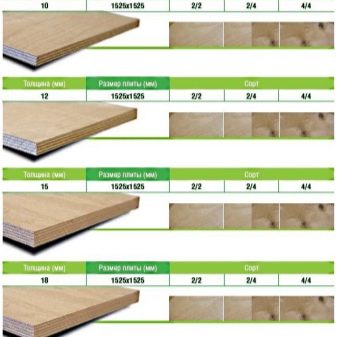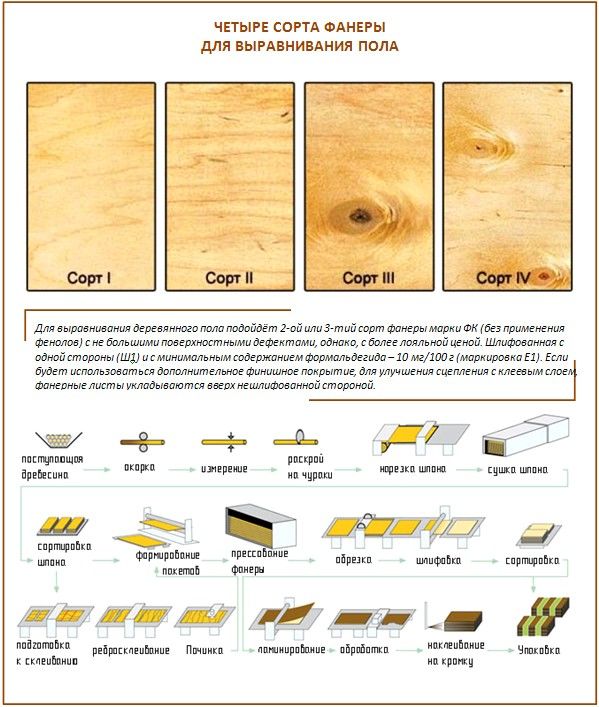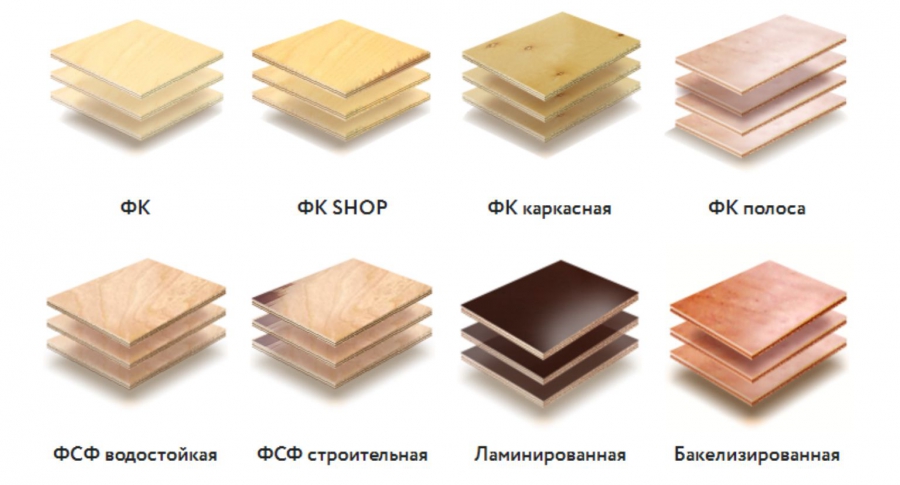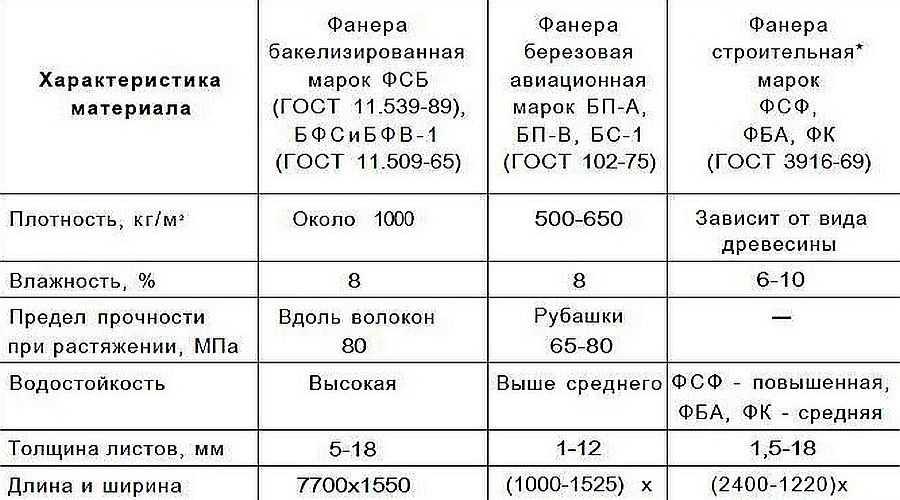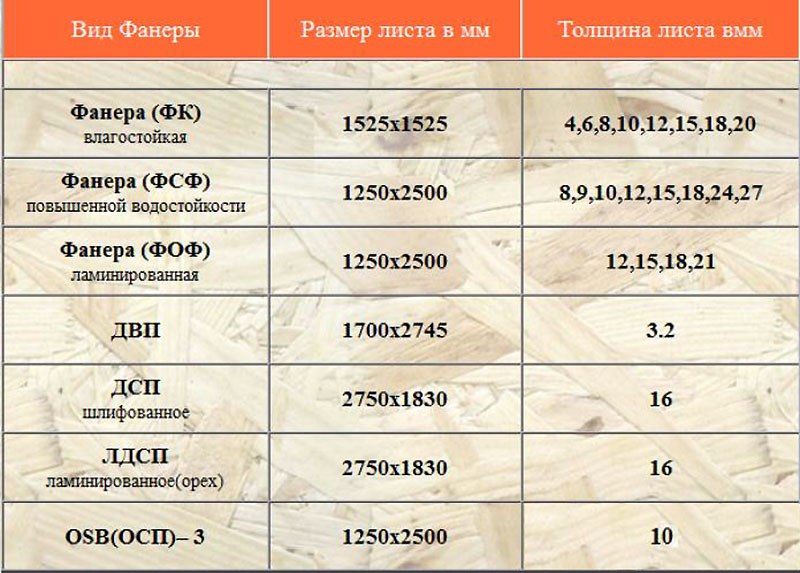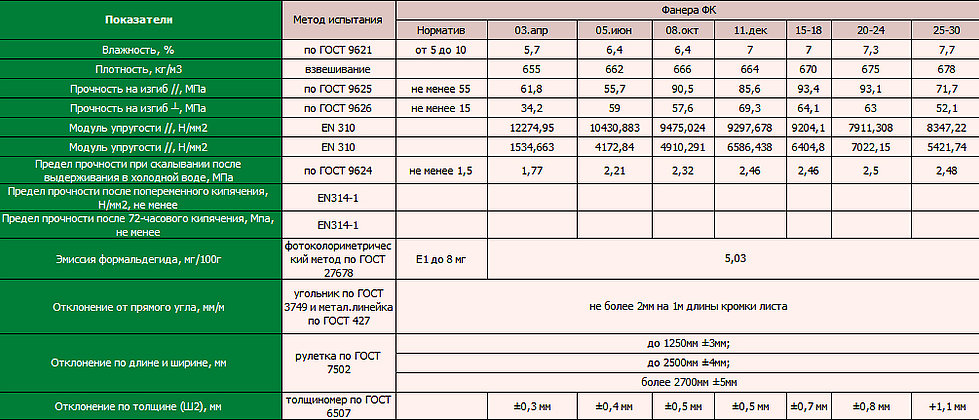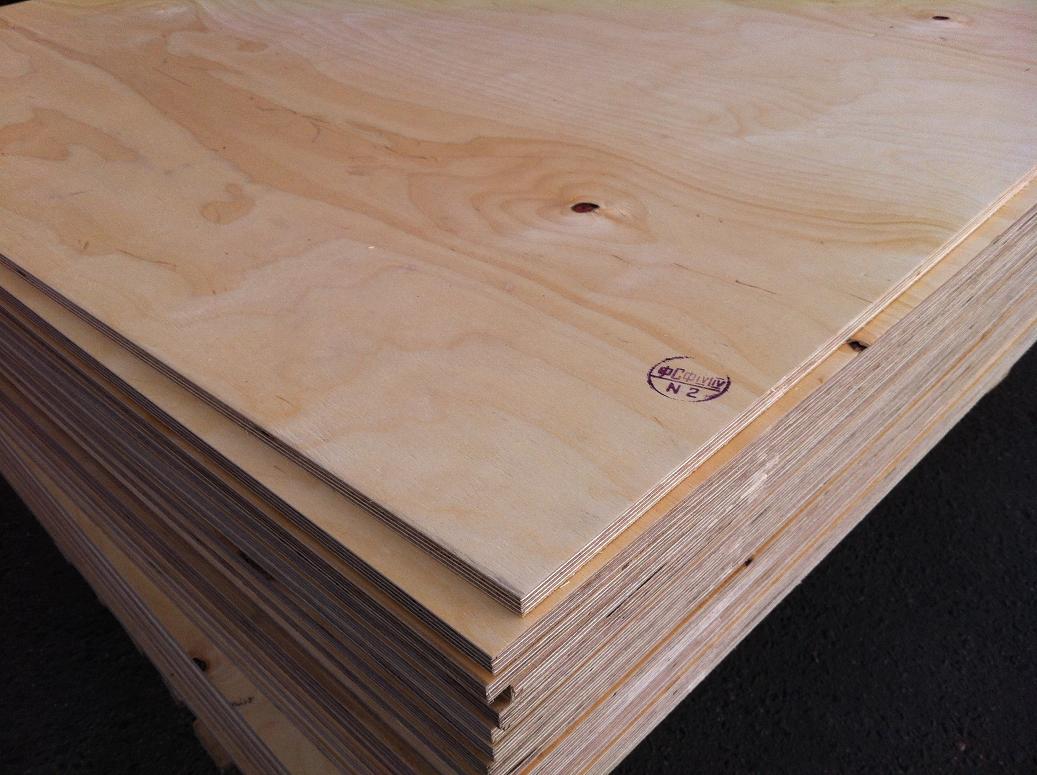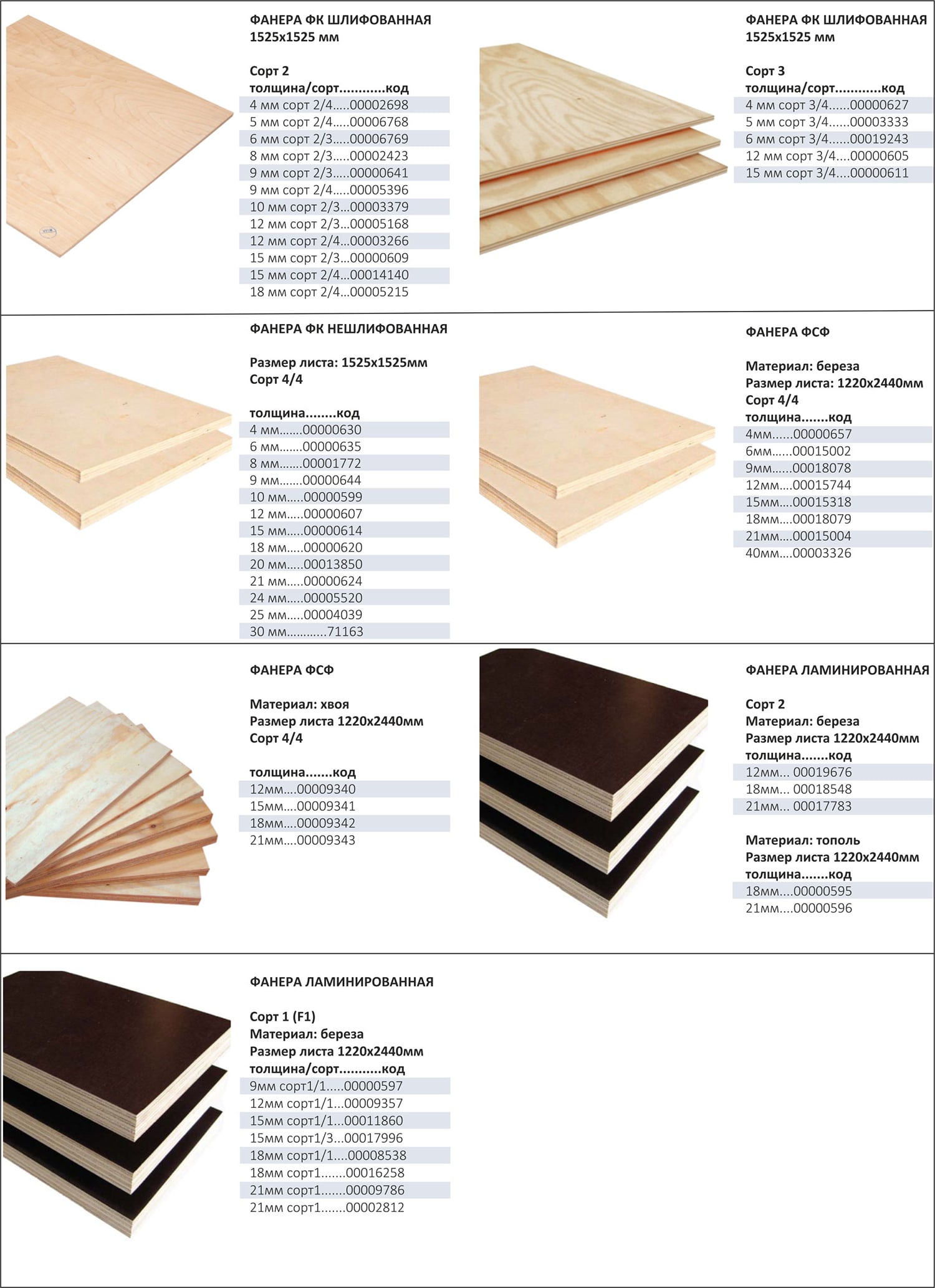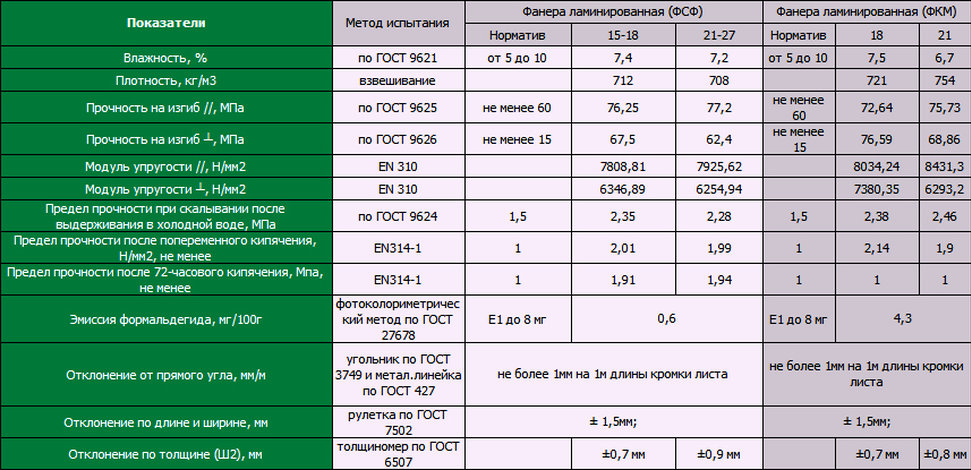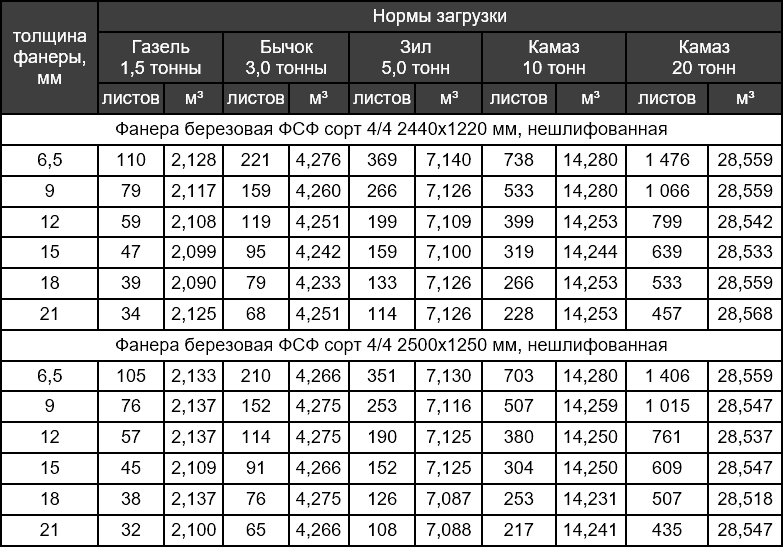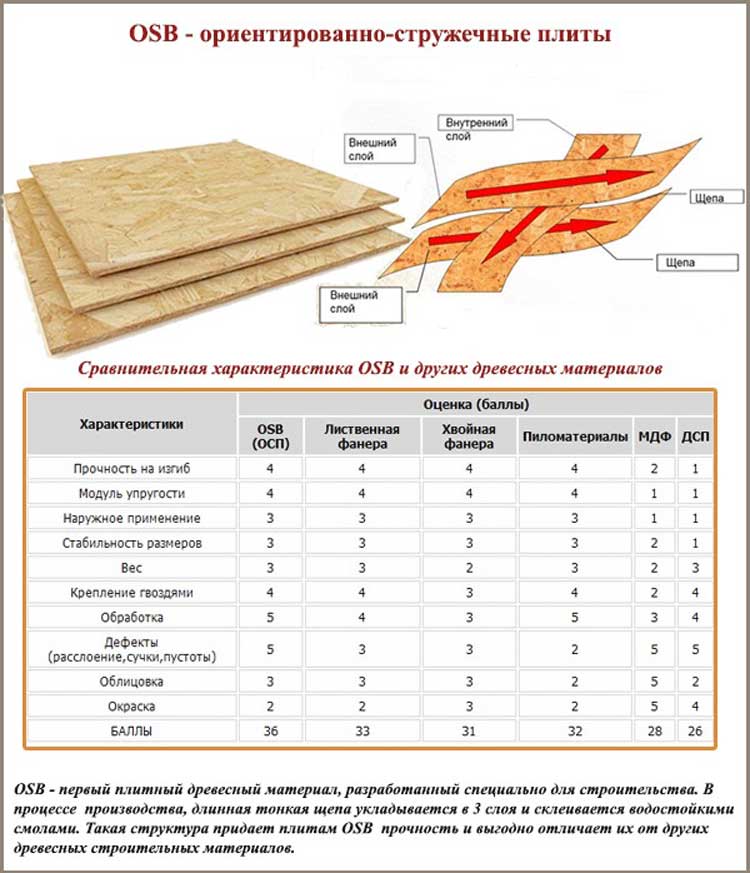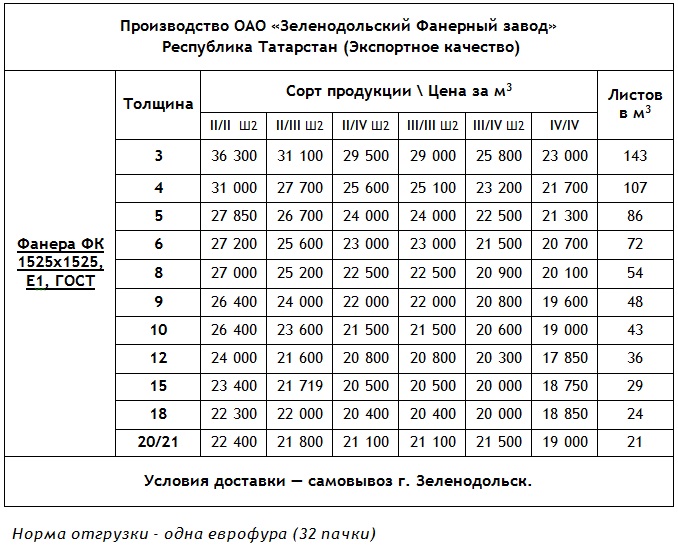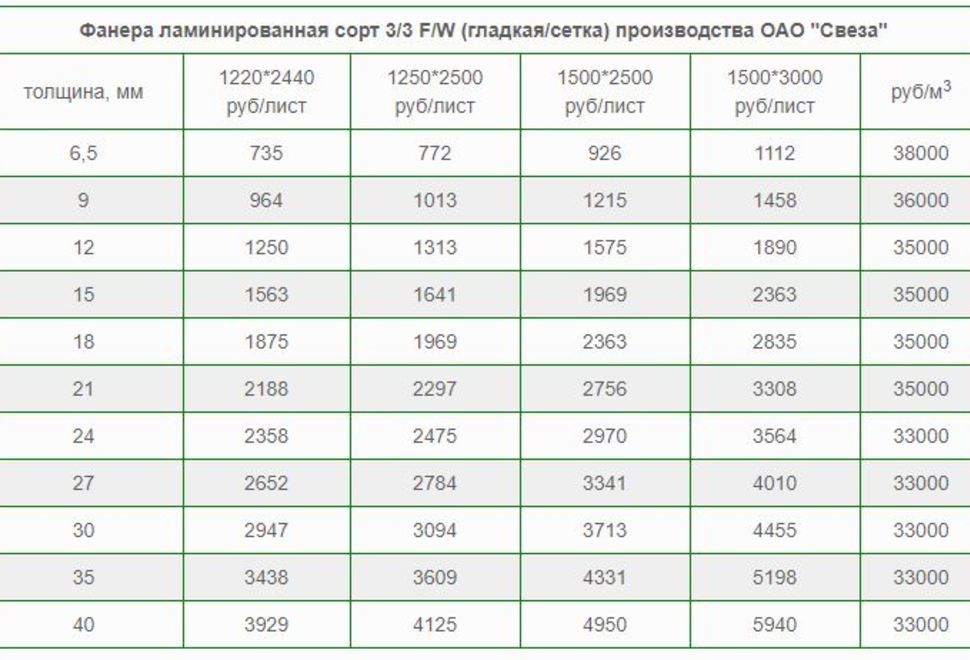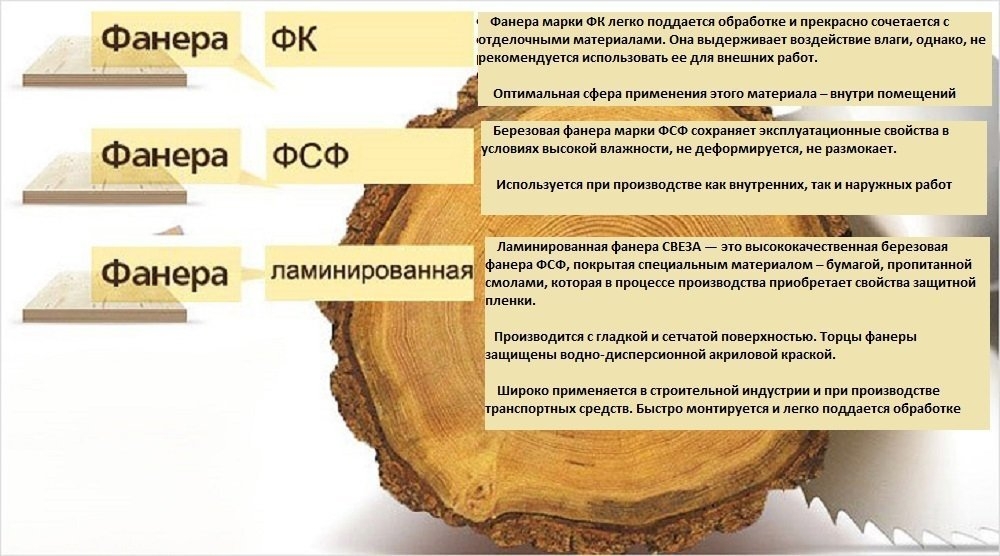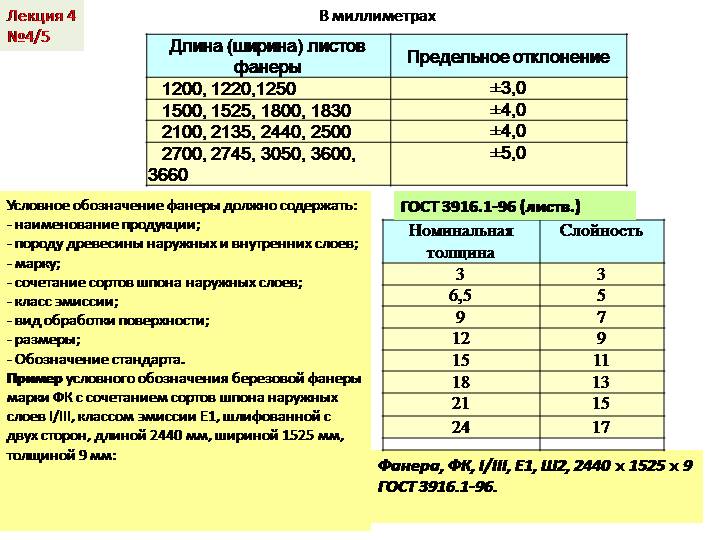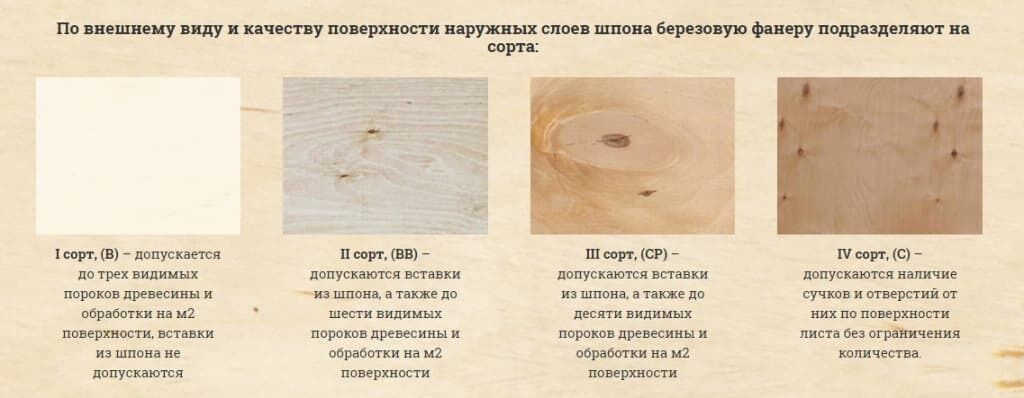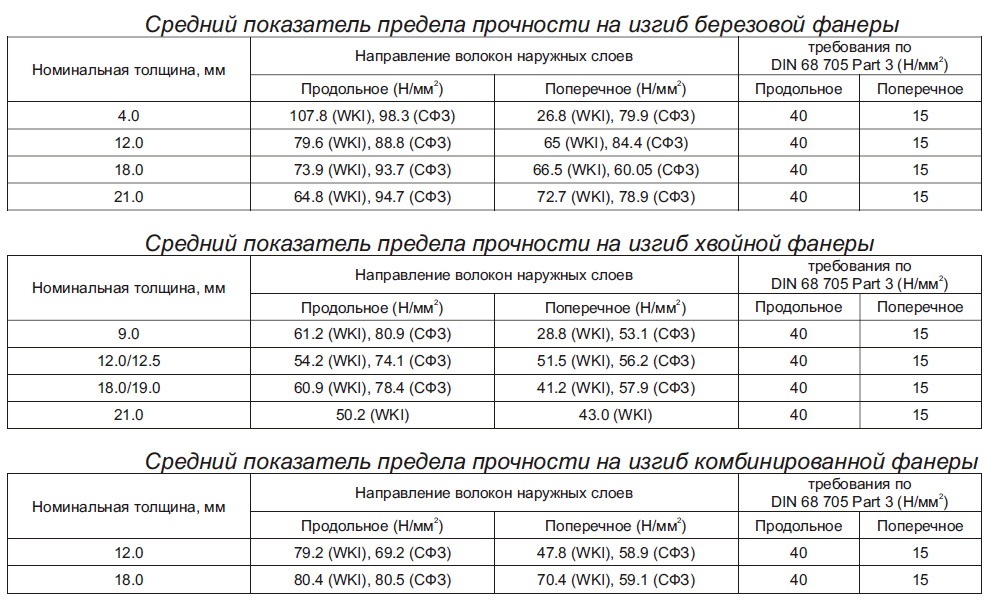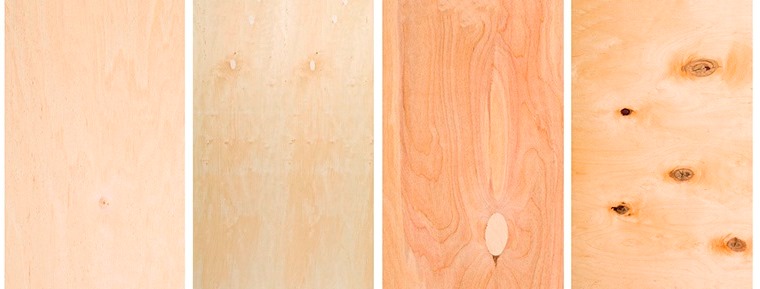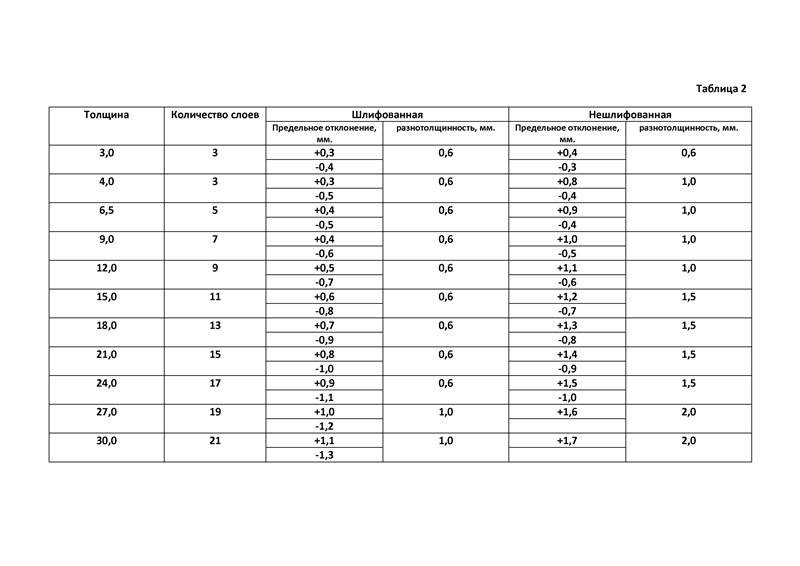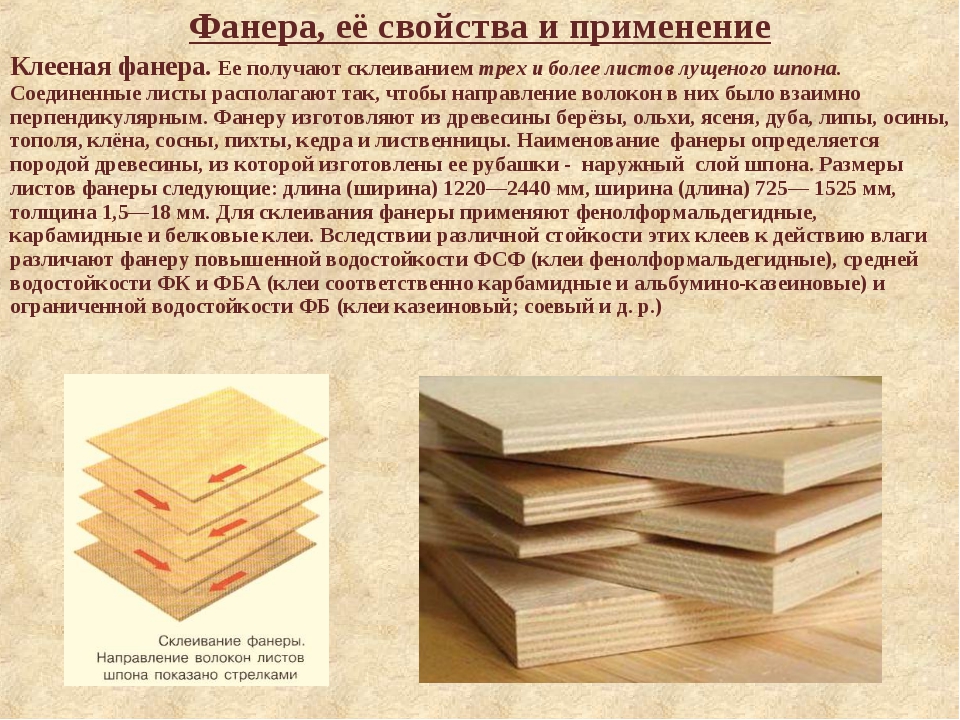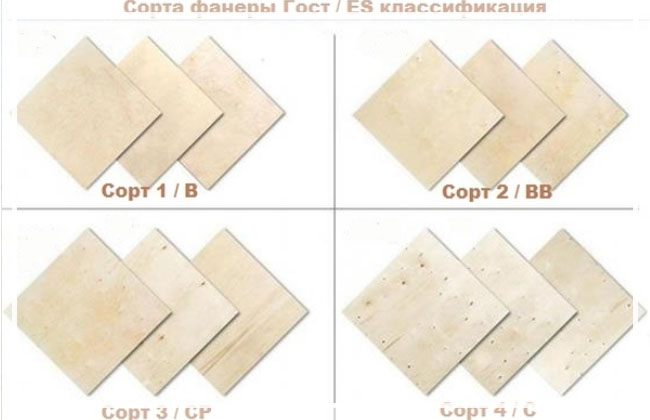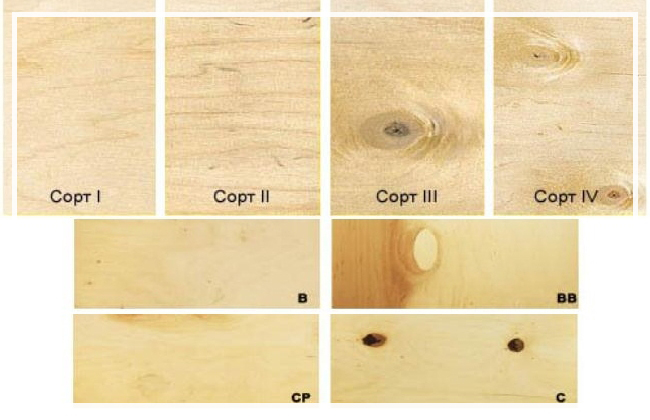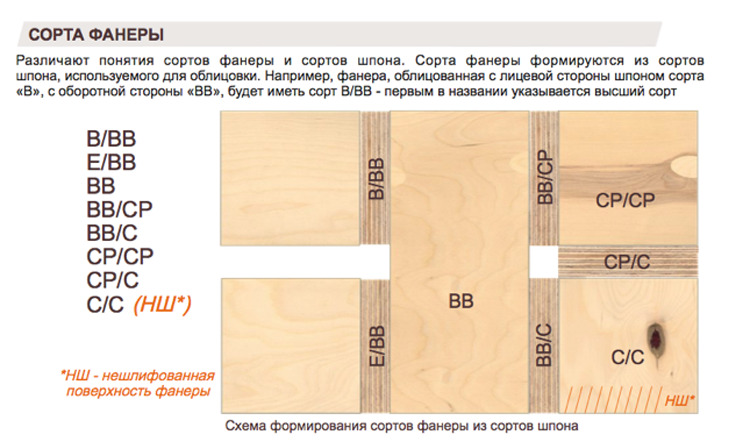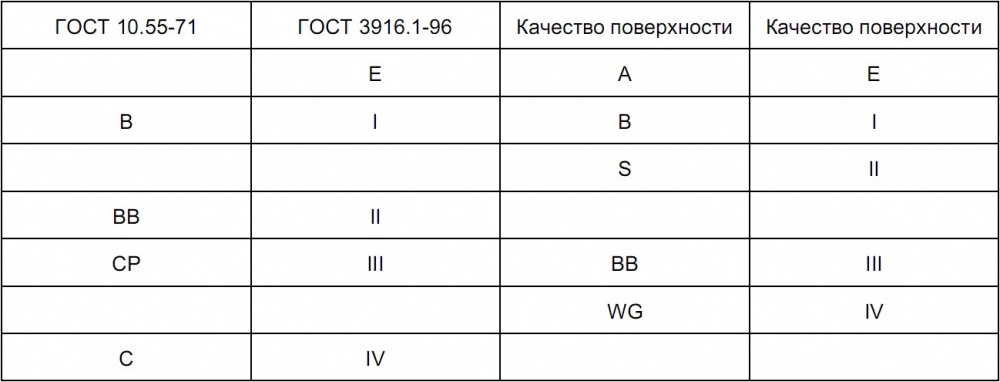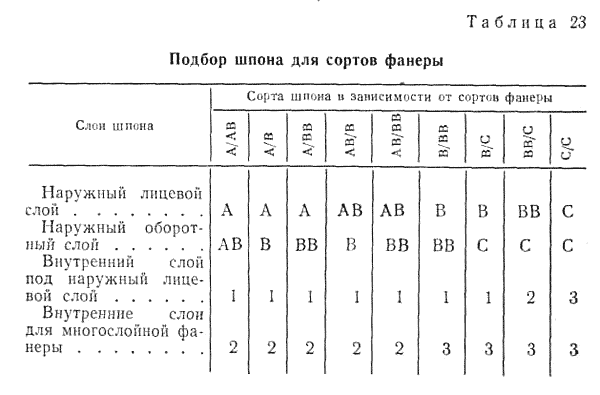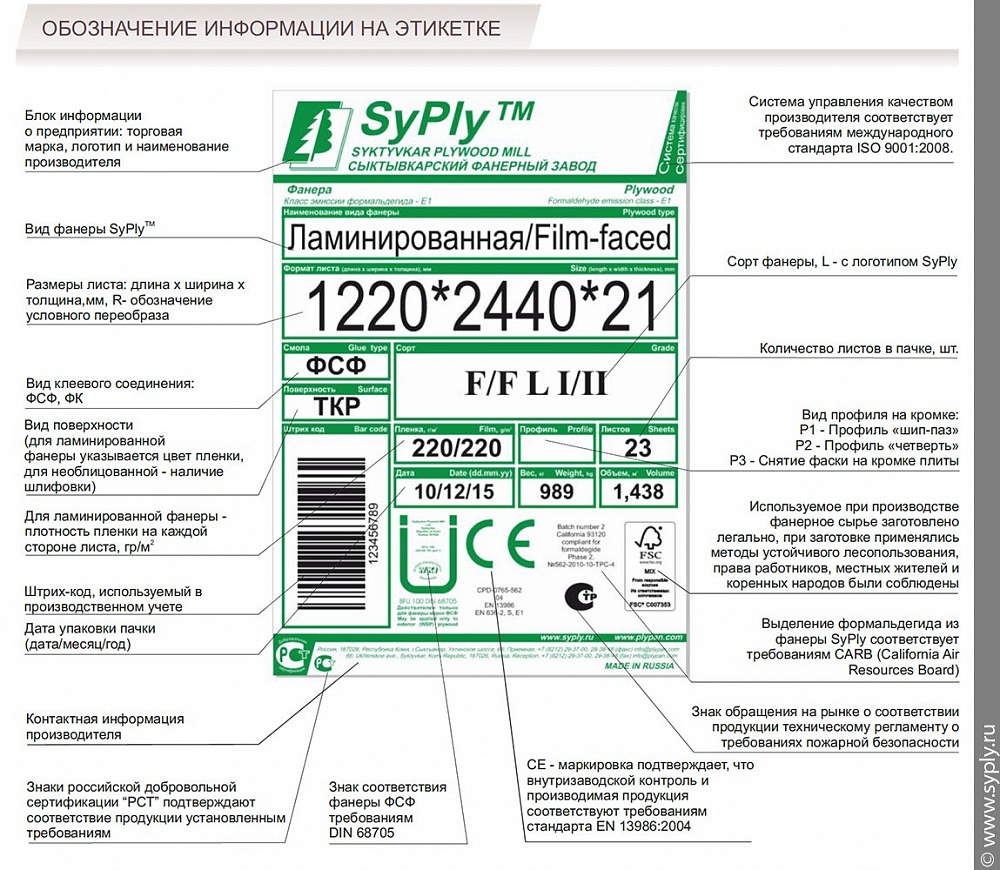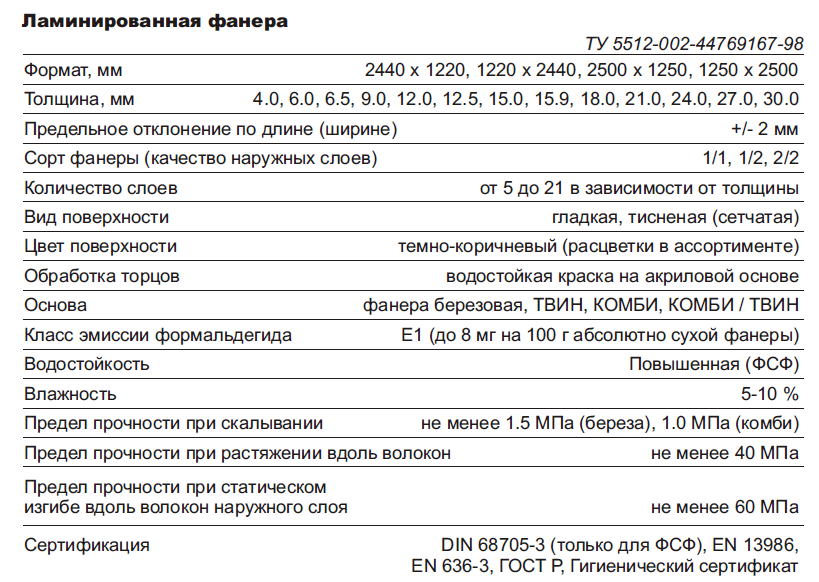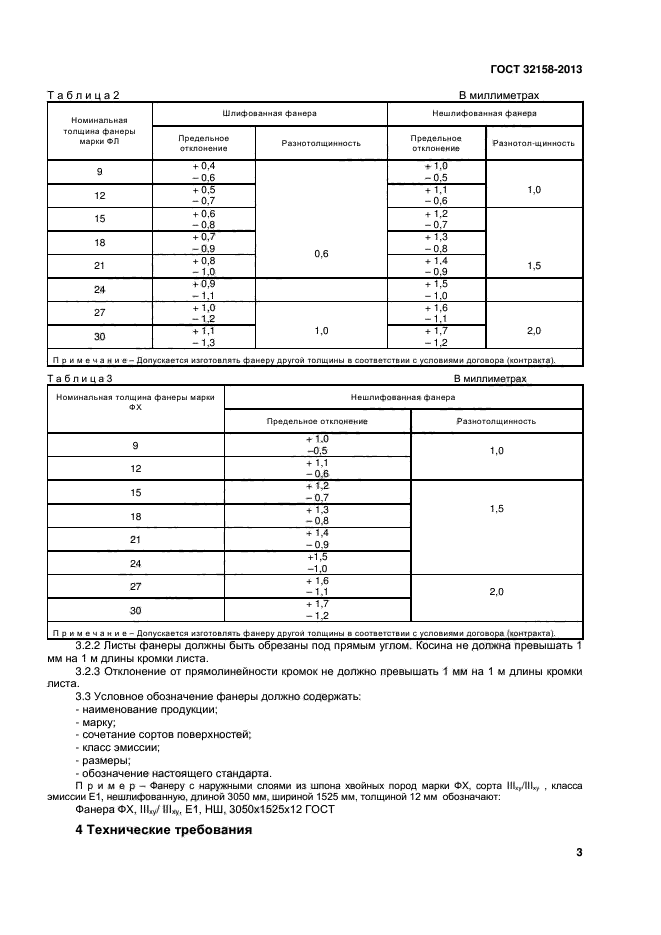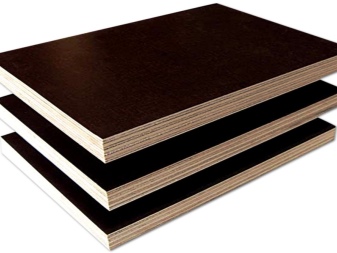Plywood FSF: decoding and characteristics
The abbreviation FSF means the plywood has been manufactured using Phenol-Formaldehyde Resin. This is a modern, well-established name that originated from the Interstate Standard GOST 3916.1-96. In the USSR, another normative document was in force - GOST 15812-87, according to which this type was called "Bakelized plywood".
FSF plywood is characterized as a material of increased moisture resistance, and can be used outdoors.
Phenol-formaldehyde resin is responsible for this quality, with which individual veneer sheets are glued.
The peculiarity of phenol-formaldehyde glue is that it belongs to the group that forms thermoplastics. These are polymeric materials that, after polymerization, are not capable of dissolving or melting. They don't even burn, they only get charred.
Accordingly, FSF plywood, being impregnated with such an adhesive composition, acquires the properties of novolac phenolic. If to be scrupulous in matters of definition, then it would be permissible to call plywood FSF - Highly filled reinforced novolac phenolic.
During the production of FSF plywood, veneer sheets are impregnated with phenol-formaldehyde resin, placed under a press and heated.
Separately, mention should be made of the orientation of veneer layers relative to each other.
They may be:
- Parallel;
- Perpendicular;
- Compiled combinatorially.
Combinatorially - this means that layers can change their orientation within one sheet. For example, the front surfaces have parallel fibers, and the inner layers can be placed at an angle of 45 ° to each other. Or they can be stacked in parallel, two layers in a row.
This variability allows you to give the finished product the desired strength characteristics. Almost always, such technologies are used in the manufacture of plywood for specific needs, for any target project.
Under a pressure of about 20-40 kg / cm2 and a temperature of 140-150˚C, the bags are in the reaction chamber for several hours. Then the temperature and pressure are reduced in steps.
As a result, sheet material with phenomenal characteristics is obtained.
It does not sink in water, and burns very badly, it is not damaged by mold and rodents try to avoid it, it has a manufacturer's guarantee that being outdoors for 5 years will not harm it!
But at the same time it has a noble type of wood, with its excellent thermal insulation qualities.
Raw materials and surface treatment
Plywood sheets are made from both soft and hard wood raw materials. Additional processing improves the performance of the material.
Conifers
Coniferous veneer is used for the manufacture of plywood for furniture, and it can be located throughout the entire thickness of the product or only in the outer planes. When placing coniferous veneer on the outside, hardwood material is used as internal layers, and the product belongs to combined types. Pine plywood is the most common; spruce, cedar, and larch wood is also used.
Birch, poplar and other hardwoods
Birch veneer is used for the production of multifunctional plywood products for a wide range of purposes, the use of which can only be restrained by higher prices than for needles. Currently, the market is filled with Chinese poplar veneer plywood; the price of the material is very small, the quality is poor.
In addition to birch and poplar, alder, aspen, linden, beech, maple are used for the outer layers. The product gets its name from this particular layer.Plywood sheets coated with veneer of oak, ash, exotic species are used for the manufacture of decorative carved panels. Compared to wood, they have a lower price, and in beauty they are in no way inferior to it.
Sanded and non-sanded sheets
Sheets of all sizes are subject to surface treatment, which can be carried out according to different algorithms. Unsanded plywood (NSh), which is used as a technical material for rough finishing and manufacturing of packaging containers, has low prices. During operation, on a rough, rough surface, cracks, chips, flaws may appear.
The sanded surface significantly improves the decorative properties of plywood, allows it to be used for furniture production, interior decoration of rooms. Grinding can be performed from one (Ш1) or two sides at once (Ш2); the process significantly increases the moisture resistance, durability and, accordingly, the price of plywood sheets of all sizes.
Laminated products
Laminated types of plywood, on the surface of which a layer of hardened oiled paper is fixed, have increased resistance to abrasion and other mechanical influences. This type is sometimes called formwork, since it is often used to equip reusable formwork. Durable laminated panels serve as partitions on ships, they are used for subfloors, playground elements, and outdoor furniture.
For the formation of some types of laminates, resins from phenol, melamine, and polyvinyl chloride are used. The polymerized coating is used to finish sheet surfaces and ends of any size, which ensures the durability and durability of products, and their high aesthetic qualities.
Marking
You need to choose plywood sheets with knowledge of the matter, carefully considering the marking, which contains all the information about the product. According to the generally accepted standard, the labeling must indicate the name of the country in which the material was made, the trademark of the manufacturer. If the buyer makes a request for a whole package, he should see the exact number of sheets in the description. They also indicate the brand of plywood, the species from which the wood raw material is made, the grade, all sizes, the category of sanitary safety, the quality of the surface layer processing.
The absence of any of the specified parameters in the accompanying documents, labeling is unacceptable, indicates the manufacturer's dishonesty. If the customer has doubts, you need to carefully consider the products. You can check the conformity of the dimensions of any sheet from the package to the dimensions announced or indicated by the manufacturer.
Types of slabs
The existing options differ in technical parameters and production method.
Pressed plywood
This name means OSB panels, which are made from shavings. The products are among the most popular building materials.
The manufacturing technology of this plywood has some nuances:
- Chips of different sizes are used for the layers, which ensures strength and reliability.
- The high pressure gives the pressed structure the desired stability.
- The chips are stacked in layers in different directions.
The high strength of OSB is largely due to the special weaving of the carpet from wood chips
The material undergoes additional processing, which gives a moisture-resistant effect, but only products of the 3rd and 4th grade have such indicators. The latter category has improved characteristics, therefore it is used for outdoor work in aggressive environmental conditions.
Without serious protection in the open air, only 4 grade sheet can be used, the third grade needs to be equipped with reinforced putty, and 1 and 2 are designed for indoor installation
Glued version
This is a fairly popular product made from veneer. Various compositions are used to connect the layers.
At the moment, there are the following varieties:
- FC. It is based on carbamide glue with phenolic additives. It stands out for its good resistance to moisture, but without direct contact, therefore the boards are used exclusively for internal cladding. To enhance the properties, parts can be processed at home with special primer and waterproofing mixtures.
- FSF. The veneer for obtaining such moisture-resistant panels is glued using phenol-formaldehyde resin. The structure of the products is preserved even in direct contact with liquid, so the material can be used for facade work.
- FBK. It is made by impregnation with bakelite varnish. The resulting products are distinguished by their increased strength and are suitable for use in difficult climatic conditions.
- FBS. Also called marine or Finnish plywood. It is produced using bakelite composition, but, unlike the previous version, alcohol-soluble glue is used. The material has excellent performance properties, includes varieties of FBS-1, FBS-A and FBS-1A. The surface of the products is completely waterproof, so even direct contact with sea water is allowed.
- FBV. The peculiarity of this material is that a water-soluble bakelite composition is used for gluing the veneer. The panels are quite strong, but do not have a water-repellent effect, therefore they are not recommended for use outdoors and in areas with constant high humidity. Includes a variety of FBV-1.
- FOB (FOB). This category includes decorative and laminated options. Due to the presence of cladding, the products perfectly cope with harmful external influences.
Only bakelite plywood glued with alcohol-soluble glue has high moisture resistance parameters, although FSF is declared as waterproof, it can only be mounted in technical unheated rooms, and FC sheets do not belong to moisture resistant at all
The FBS and FBV brands can be quickly distinguished, since they look different: the first variety is brown, the second is black.
Application of FSF plywood
The coniferous grade of FSF plywood can be used for laying wooden parquet or laminate. The use of a birch variety is impractical here due to its higher cost. Also, in some cases, it is used to create flooring under the roof, while the low strength of coniferous plywood plays almost no role. Pine and spruce plywood is also used for temporary structures and durable, inexpensive packaging. Coniferous plywood is used mainly in construction because of its lower price.
In some cases, the use of softwood plywood is preferable to hardwood. This is due to the fact that they have fewer defects, and natural resins add water resistance to the material.
The main areas in which moisture-resistant softwood plywood is used fsf
The main area of application of this grade of plywood, as mentioned earlier, is construction. Here it can be used for various purposes, up to the construction of temporary residential structures.
In some cases, it is advisable to use plywood in the furniture industry. In this area, FSF birch plywood is more widely used due to its decorative properties.
Coniferous plywood FSF is also used in the automotive and carriage industries. Here, she most often plays the role of sheathing.
It is also advisable to use plywood in the production of packaging, in particular, boxes. Such packaging comes out cheap at cost, and the quality meets all the required standards.
Now it becomes clear why the request buy plywood fsf is becoming so popular. After all, this material meets all the requirements for quality and reliability, and its cost is relatively low.
3,133 views.
Plywood specifications
Strength and density of plywood
The strength of the plywood depends on the characteristics of the original wood and the bond strength. Strength is indirectly indicated by the density of the material. As a rule, the density of plywood ranges from 550-750 kg / m3, that is, it roughly corresponds to the density of wood or slightly exceeds it due to the higher density of the resin with which the veneer is held together.
In GOST, for ordinary plywood, different density levels are provided - from 300 to 1000 kg. Low specific gravity is possible when using light wood and "loose" veneer. Weighting occurs due to the use of denser resins and other features of the manufacture of a particular type of material. For example, bakelized plywood can have a density of up to 1200 kg / m3. It is also distinguished by the greatest strength.
The main, most important indicators of the strength of plywood are the ultimate strength in bending, the holding strength of the fasteners. The flexural strength of plywood grades FSF and FK is approximately 3-4 times lower than that of solid wood. FBS and FBV grades are superior in strength to the original wood. The resistance of screws to pulling out is quite high due to the pronounced layered structure (when installed in the face) and reaches 6-8 kg for each millimeter of fastener length.
Environmental friendliness
The ecological properties of plywood are characterized by their emission class. The best brand in this respect is FBA. There are no synthetic materials in it at all.
All other plywood grades are sources of volatile formaldehyde to one degree or another. For residential use, materials with emission class E1 and lower should be selected. Interestingly, in GOST for film faced plywood only class E1 is provided.
Biological resistance
Plywood is not insured against rot, blue (for conifers), mold. However, the resistance of plywood to biological damage and damage is higher than that of ordinary wood. This is due to the fact that the veneer is in direct contact with phenolic or urea resins, which partially function as an antiseptic. Coniferous veneer has a higher resistance due to the characteristics of wood. Bakelized plywood has the greatest durability.
In any case, you should take into account the operating conditions of the material and choose the right one for them or carry out additional antiseptic treatment.
Flammability
Plywood is a highly flammable material. This must be taken into account when applying it. It is possible to increase the fire resistance of structures and products from it by special processing. There is also a special, difficult-to-combustible type of plywood - FSF-TV.
Moisture resistance
The moisture resistance of the most popular FSF and FK varieties is demonstrated by the leaf delamination test, which is carried out after strong moisture. Before testing, FC plywood is soaked in water for 24 hours, the FSF brand is boiled for an hour, and upon agreement with the customer, within 6 hours. FBS and FBV brands are also boiled for an hour.
After water treatment and drying, the shear strength on the adhesive layer for different brands is:
- FC and PSF - from 2 to 10 kgf / cm2 (0.2-1 MPa);
- FBV - 14.7 kg / cm2;
- FBS - 17.6 kg / cm2.
FBS grade is suitable for tropical climates and other difficult conditions.
Insulating properties
Plywood can be used as part of external enclosing structures. In this application, its insulating qualities are taken into account.
Moisture permeability.
Any plywood is capable of absorbing water, and therefore is permeable to moisture. However, the moisture permeability of the material is capillary and depends on the type of impregnation. In any case, when one side is moistened, moisture will penetrate to the opposite side and can be transmitted to adjacent layers of the enclosing structure.
Thermal conductivity.
The thermal conductivity of plywood depends on its density and can range from 0.09 to 0.25 W / (m ∙ K). For the most used brands, the thermal conductivity of the material is close to that of wood.
Water vapor permeability.
Water vapor permeability is an important parameter that is taken into account when calculating multilayer structures that enclose rooms with an artificial microclimate.
The vapor permeability of plywood is approximately three times lower than the permeability of wood in the direction across the grain, and five times lower than the permeability of brickwork. In some cases, this property can be used for vapor barrier walls from the inside, and must be taken into account when using plywood for external cladding.
How to use plywood correctly
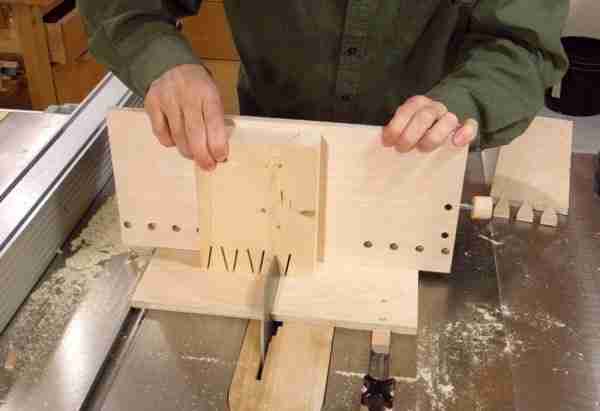 Plywood cutting
Plywood cutting
At the end of the article, a small instruction that explains how to use it correctly described material, especially if you decide to work do it yourself. 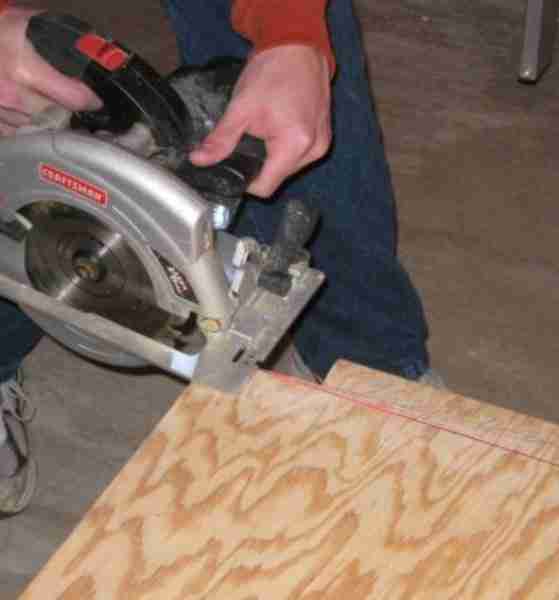 Cutting with a hand-held circular saw
Cutting with a hand-held circular saw
First of all, it should be noted that the tool used for processing should be characterized by high quality. In particular, the cutting edge must be sharp enough to easily cut the plywood, otherwise material delamination and chipping may occur.
Using a circular saw? Then remember the following tips:
- The speed of rotation should be higher than when processing other types of wood materials.
- To avoid a possible drop in disc speed, do not rush to move it.
- Use fine-toothed discs.
- If you do not want to chip on the back of the material, place a lining under the bottom, which can be a thin board or already used or unnecessary plywood scraps.
Quality and price
Table of dependence of the price of plywood on the thickness and material of veneer.
If you wondered what FSF plywood is, you should know that the material is produced in 5 grades, the last of which is called elite, and the first 4 are named by the grade numbers. The characteristic must be presented on each side, which is indicated by the marking. For a canvas, it can be as follows: 2/4 or 3/2, etc.
The cost of the canvas will be higher if both sides are of high quality. The cost often depends on the manufacturing plant. The most expensive plywood on the domestic market is plywood, which is produced within the walls of Chudovo by the Finnish concern UPM. Plywood from the Rzeshart Plywood Mill and a number of other large enterprises that work for export are somewhat more affordable.
The most budgetary ones are prices for small mills that do not produce low-quality products - they reduce prices in order to fully utilize production capacity. You can see the dependence of the cost of FSF plywood on the thickness of the sheet and the composition of the sheet.
Usage Tips
When purchasing plywood, many consumers do not treat it carefully enough during delivery and storage, as a result of which the material is unable to reveal all its advantages. If you work with this material intensively and a lot, and you often have unused material next time, you should know and strictly follow the recommended rules for storing plywood. Considering that FC has only relative moisture resistance, it must be stored indoors without excessive humidity. Since the material itself can already have an aesthetic appearance, the warehouse should ideally also be clean. The same requirements are also relevant for transportation - it is unacceptable to transport FC in a truck with an open body.
The strength of this type of plywood sheet is far from unlimited, therefore storage is carried out in not too high piles so that the lower sheets can withstand the pressure of the upper ones. Plywood of this type can be stored in rows of no more than 5 pallets in height, and even then - every half meter, an intermediate stacking of bars is made. With absolutely correct observance of the stated conditions, plywood of the FC type is preserved for 3 years. Theoretically, it can be used after that, but it should be understood that the performance characteristics of the material have already inevitably decreased.
In the next video, you will find additional information about the grades of plywood according to GOST.
Plywood grade grades
For the production of veneered sheets, different adhesives are used. Possible plywood grades:
- FBA is non-moisture resistant. It is glued together with natural albuminocasein adhesives. It is environmentally friendly, but not often used due to its low moisture resistance
- FC - glued with urea glue. It is characterized by an average moisture resistance and is used for internal construction and interior work. It is used to produce packaging material
- FSF - glued with resin-phenol-formaldehyde glue. It is characterized by high moisture resistance, therefore it is used in outdoor construction work, roofing work.
Plywood brand FC
FK plywood is moisture resistant, made of veneer treated with a compound based on urea resins, which are readily soluble in water (photo). Therefore, this type of plywood is not particularly moisture resistant, although it is declared moisture resistant.
FK plywood made in accordance with GOST does not emit harmful compounds of phenol and formaldehyde, therefore it can be used inside residential premises.
Several types of FK plywood are made:
- Coniferous - made of coniferous veneer;
- Birch - made of hardwood veneer;
Several varieties are produced, the most expensive of which is elite. To reduce the cost of material, manufacturers often produce sheets with one side of a higher grade. The so-called front side of a plywood sheet can be of one type, and the back side of another.
Application of plywood FC
Moisture-resistant plywood of the FK brand is used:
- in construction, for interior wall cladding;
- to create inexpensive furniture;
- as a basis for laying laminate or laminate boards; base for the floor;
- to create various types of temporary architectural structures.
Which plywood to choose?
Softwood and hardwood plywood have their own advantages and disadvantages. Coniferous in comparison with birch is much cheaper and lighter in weight. Coniferous plywood has fewer veneer layers than birch plywood. Because of this, the strength, elasticity and wear resistance of the material are inferior to plywood from sheet wood species.
Coniferous veneer is impregnated with natural resins, therefore it is less susceptible to various molds. The appearance of birch veneer is less textured, light, coniferous veneer is darker and more interesting in design (photo).
Definitely, if you need a more durable structure, it is better to use grades of hardwood plywood, in this case, birch, if you need a relatively inexpensive and environmentally friendly material - plywood softwood veneer... Birch, coniferous plywood is a practical and convenient building material.
The most common building material
Types and grades of plywood
This product is made from several types of hard and soft woods.
Is different:
- by appointment;
- service life;
- appearance;
- cost.
The Russian industry produces plywood of four grades, the “elite” grade is practically not produced in Russia.
- ... In accordance with GOST 3916.1−96, the maximum permissible defect is 3 non-consolidated knots per square meter and 5 healthy knots. The size of the knot is no more than 6 mm. Cracks, pricks, rot, ribbing and other serious defects are not allowed. Premium plywood is used to make furniture.
- ... Plywood of this grade is used in construction, for facing with finishing materials.
- ... There can be an unlimited number of intergrown healthy knots, and 10 per sq.m.
- ... There are no restrictions on the number of knots, the only requirement is a strong gluing of the layers.
These products can be different in thickness.
This building material differs not only in terms of grades. There are many types of plywood on the modern construction market.
Plywood varieties:
Quality veneer aircraft plywood
- Bakelized - veneer impregnated with synthetic resins is used;
- General purpose - made from different types of trees (ash, alder, beech, birch, aspen, oak, linden, pine, spruce, fir);
- Construction - more often they use coniferous or combined, with a layer of more than 2 mm;
- Furniture - high requirements are imposed on it;
- Decorative - represents a material covered with a film coating;
- Laminated - the surface is resistant to environmental influences.
Laminated decorative products
Depending on the resistance to the action of water, plywood is:
- waterproof F - glued with cresol and frenol-formaldehyde adhesives;
- medium-water resistant FC - urea and albumin adhesives are used in the production;
- limited water resistance - the sheets are glued together with adhesives based on animal and plant proteins, for example, casein.
By design, plywood is distinguished between equal-layer (the thickness of all veneer layers is the same) and non-layer (veneer layers of different thicknesses), diagonal (the fibers of the "shirt" are located at an angle of 45 degrees to the middle layer), star-shaped (the fibers of adjacent sheets are located at angles of 30 and 60 degrees) ...
The most common sheet sizes in meters: 1.525x1.525; 1.525x1.22; 2.44x1.525; 2.44x1.22; 1.83x1.22; 1.525x0.75; 1.22x1.22; 1.22x0.725.
Properties and characteristics of plywood
Plywood furniture: photo
Unique properties make this building material one of the most popular and widely used. It is used in shipbuilding, aviation, furniture production, construction - for interior decoration. The layered structure makes it extremely durable and lightweight at the same time.
Large sheet sizes allow you to cut solid parts from it. Plywood bends, does not crack - it is a practical and reliable material. It is environmentally friendly and has an attractive appearance.
The low price is also a very strong argument in favor of plywood. According to the degree of surface treatment, polished and unpolished products are distinguished.
Wide range of plywood
Lamination and processing of the ends with special impregnations prevent the appearance of mold and blue stain, protect against adverse weather conditions, which is important when used outdoors. What negative qualities can spoil the impression of this wonderful building material?
What negative qualities can spoil the impression of this wonderful building material?
Plywood is resistant to weak acids, but chlorine, organic solvents (gasoline, acetone) should not be allowed to get on it, they cause swelling and a decrease in the strength of the material.
Easy flammability, flame resistance at a thickness of 18 mm is 13-15 minutes; low sound insulation, the coefficient at a thickness of 18 mm is 22-25 dB.
Standard dimensions of plywood sheet
Sheets can be divided by size into standard and large format. GOST regulates them as follows:
General purpose plywood sheets
| Standard dimensions of sheets, mm | Large-format plywood sheets, mm |
| 1220.00 to 1220.00 | 1,830.00 to 1,525.00 |
| 1525.00 to 1220.00 | 2440.00 to 1220.00 |
| 1525.00 to 1525.00 | 2500.00 to 1250.00 |
| 3000.00 to 1500.00 | |
| 3050.00 to 1525.00 |
Dimensions of laminated moisture resistant plywood
The dimensions of the waterproof sheets are based on the dimensions of the plywood for general use. For example, the size range of the well-known domestic manufacturer SVEZA is as follows:
1) 1220 / 1250х2440 / 2500 mm;
2) 2440 / 2500x1220 / 1250 mm;
3) 1200/1500 / 1525х2500 / 2745/3000/3050 mm
The sizes of the popular Finnish plywood WISA: 1220 * 2440 mm and 1250 * 2500 mm.
| sheet thickness, mm | 6,5 | 9 | 12 | 15 | 18 | 21 | 24 | 27 | 30 | >30 |
| number of veneer layers | 5 | 7 | 9 | 11 | 13 | 15 | 17 | 19 | 21 |
Dimensions of bakelite plywood
Dimensions 5700 mm x 1250 mm or 2800 mm x 1250 mm. The sheet thickness ranges from 5 mm to 40 mm.
Like any other sheet material, plywood does not have perfect geometry. In the process of cutting, flaws arise. They are not so large as to be visible to the naked eye, but you need to know that they exist and this is normal
This is especially important for furniture makers who cut parts from sheets to exact dimensions.
GOST 3916.1-96 regulates the maximum permissible geometric deviations in relation to the length and width of the plane. These data are shown in the table below.
Geometric tolerances
| Length / width of the plane of the plywood sheet, mm | Critical deviation, mm |
| 1200 | +/- 3,0 |
| 1220 | |
| 1250 | |
| 1500 | +/- 4,0 |
| 1525 | |
| 1800 | |
| 1830 | |
| 2100 | +/- 4,0 |
| 2135 | |
| 2440 | |
| 2500 | |
| 2700 | +/- 5,0 |
| 2745 | |
| 3050 | |
| 3600 | |
| 3660 |
There is also an allowable take-off run in terms of thickness. It depends not only on the standard value, but also on the degree of surface processing. The pivot table looks like this:
| Standard thickness of plywood sheets, mm | The number of wood interlayers, not less | Critical deviation for sanded plywood, mm | Critical deviation for non-sanded plywood, mm |
| 3,00 | 3 | from +0.30 to -0.40 | from +0.40 to -0.30 |
| 6,50 | 5 | from +0.40 to -0.50 | from +0.90 to -0.40 |
| 9,00 | 7 | from +0.40 to -0.60 | from +1.00 to -0.50 |
| 12,00 | 9 | from +0.50 to -0.70 | from +1.10 to -0.60 |
| 15,00 | 11 | from +0.60 to -0.80 | from +1.20 to -0.70 |
| 18,00 | 13 | from +0.70 to -0.90 | from +1.30 to -0.80 |
| 21,00 | 15 | from +0.80 to -1.00 | from +1.40 to -0.90 |
| 24,00 | 17 | +0.90 to -1.10 | from +1.50 to -1.00 |
| 27,00 | 19 | +1.00 to -1.20 | from +1.60 to -1.10 |
| 30,00 | 21 | +1.10 to -1.30 | from +1.70 to -1.20 |
The presence of deviations in the geometry of the sheet does not mean that it needs to be rejected. First, it is worth making sure that this take-off exceeds the tolerance allowed by the standards. And after that, plywood needs to look for another application that does not require the preservation of strict geometric shapes.
Save the page to your browser bookmarks. Information about the dimensions is indispensable when calculating the cost price, to estimate losses in the form of scraps. In addition, there are logistic aspects. Before transportation, it is necessary to calculate how much space (how much) the plywood will take. Storage also involves calculating the capacity of the room.
This is interesting: How to choose a laminate for quality - we study from all sides
How appropriate is it to use plywood
To answer this question, we will consider certain types of plywood sheets, because there are several of them, as well as the expediency of their use in residential premises.
How the product is made
In search of an answer, we need to turn to the process of making a plywood board, because initially most people see in plywood only an element of wood and external veneer finish, if any.
The production involves:
- Veneer layers. Wood, in fact, cannot be dangerous to humans, after all, we are talking about a natural, natural material.
- Adhesive component. It is in it that the danger to a person may lie.
Among the glue that is used, we will distinguish three types:
- Formaldehyde.
- Phenol.
- Resorcinol.
In addition to these components, in the process of gluing the veneer, simple PVA glue was used, although it was quickly abandoned - the price of a plywood sheet glued in this way turned out to be too high. Plywood sheets
Hazardous components
So we come to the heart of the question and the answer is unambiguous - a plywood sheet can pose a danger to human health!
Let's immediately determine that both phenol and formaldehyde contain toxic compounds in their formulas that can naturally harm health. Formaldehyde is dangerous
And no matter how small these doses are, because if we have a large area of application of plywood sheet, then the harm that it can have on the state of the body increases in proportion to the number of plywood boards. As to what harm we can experience from plywood with the use of formaldehyde and phenol, here are the simple symptoms of poisoning:
As to what harm we can experience from plywood with the use of formaldehyde and phenol, here are the simple symptoms of poisoning:
- Headaches that begin to appear from being in a room covered with such a plywood sheet.
- Cough appears from frequent contact with sheets.
- Nausea, vomiting. This is already the stage of severe poisoning and it can come if you are in a room decorated with plywood boards with phenol and formaldehyde for a long enough time.
By the way, it is on the basis of impregnation that all plywood boards can be divided into:
- Slabs for interior use, for decoration and furniture collection.
- Slabs for external work, for use in non-residential premises.
Now let's look at everything practically under a microscope.
So, we refer to safe types of plywood:
- FBA. The marking indicates that albuminocasein glue was used in the production, which is a natural product. Of course, this type of product is limited in use due to its low moisture resistance, but we can safely use it in the decoration of living quarters.
- FC. Safe cabamide glue is used here, the instructions for using this type of plywood allow us to work inside residential premises.
- FB, this type is produced using bakelite varnish. Despite the fact that plywood impregnated with this composition is maximally ready to resist aggressive environments, it is safe for our health and can be used in living quarters, kitchens, saunas.
Original interior from plywood sheet
There are several other types of plywood sheets that are impregnated with bakelite glue, and to give credit to this glue, each plywood sheet has incredible technical characteristics.
Yes, this affects the price, and they are not always rational for use simply in ordinary internal work, but their safety and durability can be useful in any construction and repair.
As for the harmful type of plywood sheet, this is the one we have already spoken about. More precisely, this is FSF, it is here that phenol-formaldehyde glue is used and the harm of plywood to health has been proven, but studies are still underway that hint that this is not the latest data.
At the same time, FSF remains one of the most commonly used categories, and it has a number of excellent properties that make it so popular. Plywood slabs in the barn
Unfortunately, not all builders are aware of the fact that FSF can pose a certain health hazard, so the use of this type continues in large volumes and in interior decoration.
How dangerous everything is, we have already described above, so any talk about an insignificant content of phenol and formaldehyde in a product has no basis for interior decoration with such a stove.
Everything related to external work, or non-residential premises, garages, sheds, this is precisely the scope of the FSF.

